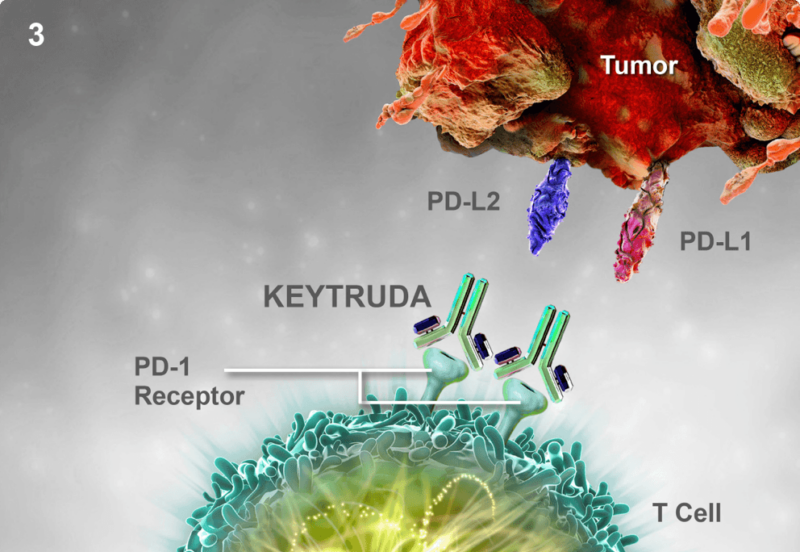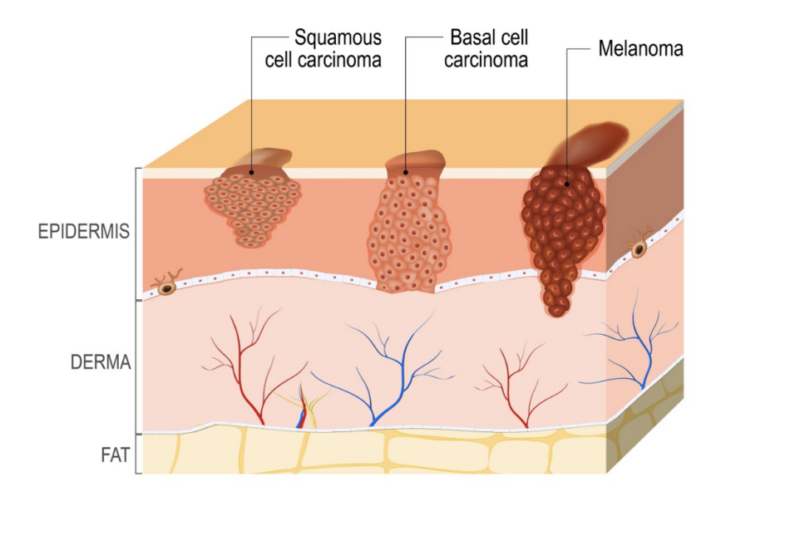Jimmy Carter, 39th president of the United States and winner of the 2002 Nobel Peace Prize, died peacefully Sunday, Dec. 29, at his home in Plains, Georgia, surrounded by his family. He was 100 years, 2 months, and 29 days, the longest-lived president in U.S. history. President Carter is survived by his children — Jack, Chip, Jeff, and Amy; 11 grandchildren; and 14 great-grandchildren. He was preceded in death by his beloved wife, Rosalynn, and one grandchild.In his later years, Carter faced health challenges, notably a diagnosis of Stage 4 melanoma in 2015, which had spread to his brain.However, after experiencing multiple health setbacks, he entered hospice care in February 2023, choosing comfort over aggressive treatment.

Former President Jimmy Carter interviewed for “The Presidents’ Gatekeepers” project at the Carter Center, Atlanta, Ga., Sept. 14, 2011.
David Hume Kennerly/Getty Images
Fascinating Facts About U.S. Presidents’ Cancers
Cancer has affected several U.S. presidents throughout history, often influencing their health, leadership, and public perception.
- Average Lifespan: U.S. presidents have lived, on average, to about 72 years old. This figure reflects the longevity of presidents over time.
- Longest-Lived President: Jimmy Carter holds the record as the longest-living president, passing away at 100 years, 2 months, and 29 days.
- Shortest-Lived Presidents:
- John F. Kennedy was assassinated at the age of 46 years.
- James A. Garfield died from assassination wounds at the age of 49 years.

- Grover Cleveland: The 22nd and 24th president underwent secret surgery in 1893 to remove a cancerous growth from the roof of his mouth. This operation was performed on his personal yacht and kept hidden from the public for over 25 years. Cleveland lived for another 15 years after the surgery, passing away from a heart attack in 1908.
- Ulysses S. Grant: The 18th president was diagnosed with terminal throat cancer at age 62, largely attributed to his heavy smoking. Grant’s health deteriorated rapidly after his diagnosis, and he died about a year later in 1885.
- Lyndon B. Johnson: The 36th president had a history of skin cancer, specifically basal cell carcinoma, which he underwent surgery to remove during his presidency in 1967. Johnson kept this diagnosis private, and it wasn’t publicly confirmed until years after his death in 1973.
- Jimmy Carter: The 39th president was diagnosed with metastatic melanoma in 2015, which had spread to his liver and brain. He received innovative treatments, including surgery, radiation therapy, and immunotherapy with pembrolizumab (Keytruda). Remarkably, Carter was declared cancer-free within months of his diagnosis and has remained active into his late 90s.
- Ronald Reagan: The 40th president was treated for colon cancer in 1985 during his second term, as well as for skin cancer in 1987. Reagan successfully underwent surgery for both cancers; however, he later developed Alzheimer’s disease, which contributed to his death in 2004.
- Herbert Hoover: After leaving office, Hoover was diagnosed with early-stage colon cancer in the late 1930s. He underwent surgery to remove part of his colon but died two years later due to complications from blood loss related to a stomach lesion.
What is Jimmy Carter Famous For?
Jimmy Carter is famous for several significant achievements during his presidency and his extensive humanitarian work after leaving office. Serving as the 39th President of the United States from 1977 to 1981, he is best known for his role in the Camp David Accords, a historic peace agreement between Egypt and Israel that marked a significant diplomatic achievement in the Middle East. He also created the Department of Energy and the Department of Education, addressing critical national issues such as energy shortages and educational reform.
Carter’s administration was characterized by a strong emphasis on human rights, making it a central focus of U.S. foreign policy. He negotiated the Panama Canal Treaties, which returned control of the canal to Panama, and established full diplomatic relations with China. His efforts in promoting human rights earned him recognition, but they were often met with resistance from other nations, particularly the Soviet Union.After leaving office, Carter continued to be active in humanitarian efforts through the Carter Center, focusing on disease eradication, conflict resolution, and promoting democracy around the world. His commitment to public service was recognized when he was awarded the Nobel Peace Prize in 2002 for his extensive work in diplomacy and humanitarianism.

Jimmy Carter’s Radiation Exposure in Young Years
In December 1952, while serving as a lieutenant in the U.S. Navy, Jimmy Carter was part of a team tasked with responding to a partial meltdown at the Chalk River nuclear research facility in Canada. The NRX reactor experienced a power surge that ruptured fuel rods, leading to the release of approximately 4.5 million liters of radioactive water into the facility’s basement. This incident posed serious risks, prompting U.S. officials to send Carter and his team to assist with the cleanup.
During the cleanup operation, Carter and his team were exposed to radiation levels estimated to be 1,000 times higher than what is currently considered safe. Each member of the team was limited to 90-second intervals inside the highly radioactive area to minimize exposure. Carter was physically lowered into the reactor area to perform specific tasks, including turning a single screw. Despite the brief exposure time, it was still considered dangerous due to the high levels of radiation present.Following this incident, Carter reported experiencing radioactivity in his urine for about six months. He stated,
“We were fairly well-instructed then on what nuclear power was, but for about six months after that, I had radioactivity in my urine.”
This experience highlighted the lack of understanding and safety protocols regarding radiation exposure at that time. After the incident, Carter and other crew members were routinely tested for long-term health effects resulting from their exposure to radiation. Despite concerns about potential health impacts, including fertility issues—Carter was warned he might never be able to have children—he later had a daughter, Amy.
Carter’s involvement in this critical incident not only showcased his early experience with nuclear technology but also influenced his views on nuclear energy throughout his life. His actions during the Chalk River accident remain a pivotal moment in nuclear history and reflect both the risks and responsibilities associated with harnessing atomic energy.
How Was Jimmy Carter Diagnosed with Skin Cancer?
Jimmy Carter was diagnosed with skin cancer in August 2015 after undergoing surgery to remove a mass from his liver. Following this surgery, further tests revealed that he had metastatic melanoma, a severe form of skin cancer that had spread to his brain, affecting four different areas. This diagnosis came after a thorough medical examination prompted by a bad cold earlier that year, which led to additional testing. During a press conference held shortly after his diagnosis, Carter explained the circumstances surrounding his health issues. Reflecting on his fulfilling life and numerous friendships, he stated
“I just thought I had a few weeks left. But I was surprisingly at ease. I’ve had a wonderful life…”
What was the Prognosis?
The prognosis for Jimmy Carter’s melanoma diagnosis in August 2015 was initially quite grim. At that time, metastatic melanoma, which had spread to his liver and brain, typically indicated a survival expectancy of six months or less for most patients, particularly those who were older. This diagnosis often resulted in a bleak outlook, with many patients facing only weeks to live.Carter himself expressed concern about his prognosis when he learned of the extent of his cancer. Reflecting his acceptance of the situation despite its severity, he stated during a press conference,
“I trust that it is in the hands of God and doctors; I’m ready for whatever comes my way,”
According to American Cancer Society, 2023 5-Year Survival Rates (U.S.)
- Localized melanoma (early stage, confined to the skin): Around 99%. This is the highest survival rate because early detection and treatment typically involve surgery, which is highly effective in this stage.
- Regional melanoma (spread to nearby lymph nodes or tissues): About 66%. This stage often involves surgery and additional therapies like immunotherapy or targeted treatment. (National Cancer Institute, 2023)
- Distant melanoma (metastasized to distant organs): The survival rate is around 27%, though this has improved significantly with new treatments like immune checkpoint inhibitors.
In the 1960s to 1980s, survival rates for melanoma were much lower, particularly for metastatic cases. The 5-year survival rate for metastatic melanoma was under 10%. During this period, treatment options were limited, and the prognosis was often poor, with most patients facing a grim outlook (National Cancer Institute, 2023).The 1990s to 2000s saw the development of new therapies, including interferon therapy and BRAF inhibitors for patients with specific mutations. While these treatments began to slightly improve survival rates, metastatic melanoma remained challenging to treat (American Cancer Society, 2023).
From the 2010s to the present, the landscape of melanoma treatment changed dramatically with the approval of immune checkpoint inhibitors such as pembrolizumab (Keytruda) and nivolumab (Opdivo), along with targeted therapies like BRAF and MEK inhibitors. These advances have significantly increased survival rates, particularly for metastatic melanoma, with some studies reporting 5-year survival rates exceeding 50% (National Cancer Institute, 2023).
Does Jimmy Carter Have a Family Cancer History?
Jimmy Carter grew up in a family with a significant history of cancer. His mother was diagnosed with breast cancer, while his father, brother, and both sisters succumbed to pancreatic cancer. This familial predisposition to cancer would later play a role in Carter’s health narrative.
What Treatment Did Jimmy Carter Undergo?
Jimmy Carter underwent a combination of treatments for his metastatic melanoma, which was diagnosed in August 2015. The treatment included surgery, radiation therapy, and immunotherapy.
Radiation Therapy
Jimmy Carter’s treatment for metastatic melanoma included a specific type of radiation therapy known as stereotactic radiosurgery (SRS). This non-invasive form of radiation therapy delivers precise, high doses of radiation to targeted areas in the brain while minimizing exposure to surrounding healthy tissue. SRS is particularly effective for treating small tumors and metastases.
Although the exact technology used for Carter’s SRS was not specified, it is commonly associated with Gamma Knife treatment, which utilizes multiple beams of radiation that converge on the tumor, delivering a lethal dose while sparing adjacent brain tissue. The primary goal of the radiation therapy was to target the four small brain tumors identified following Carter’s diagnosis. By focusing the radiation specifically on these tumors, doctors aimed to shrink or eliminate them, thereby alleviating symptoms and preventing further spread of the cancer.
How Did Immunotherapy Extend Jimmy Carter’s Life with Melanoma?
To combat this aggressive form of cancer, Carter underwent a combination of treatments, including radiation therapy and immunotherapy with the drug pembrolizumab (Keytruda).
This treatment was relatively new at the time of Carter’s diagnosis, having received FDA approval in 2014 for patients with advanced melanoma. The introduction of pembrolizumab marked a significant advancement in cancer treatment, particularly for melanoma, which historically had a poor prognosis.Carter began receiving pembrolizumab after completing radiation therapy. His response to the treatment was remarkable; within just four months, he announced that he was cancer-free, with MRI scans showing no signs of the original tumors or any new growths. Experts noted that without immunotherapy, Carter likely would not have survived much longer than six months due to the aggressive nature of metastatic melanoma.
Pembrolizumab, marketed as Keytruda, is a humanized monoclonal antibody that plays a crucial role in cancer immunotherapy, particularly for treating metastatic melanoma and other malignancies. It targets the programmed cell death protein 1 (PD-1) receptor, which is expressed on activated T-cells. Normally, the binding of PD-1 to its ligands, PD-L1 and PD-L2, inhibits T-cell activation and allows tumor cells to evade immune surveillance. Pembrolizumab binds to PD-1 with high affinity, blocking this interaction and preventing inhibitory signals that dampen the immune response. This blockade enhances T-cell activation and promotes an anti-tumor immune response, effectively reactivating the body’s ability to target and destroy cancer cells.

You can also read Special article Immunotherapy for Melanoma: Types, Success Rate, Side Effects & More by OncoDaily
Support from Friends and Family
Jimmy Carter’s journey through his battle with melanoma has been significantly supported by his family and friends, highlighting the importance of a strong support system during challenging health crises. Following his diagnosis of metastatic melanoma in August 2015, Carter received unwavering support from his loved ones, which played a crucial role in his resilience and outlook during treatment.Carter’s family, including his wife Rosalynn and their children, were instrumental in providing emotional and practical support throughout his treatment. The couple, married for over 75 years, shared a deep bond that offered comfort during difficult times.
As Carter underwent various treatments, including surgery, radiation therapy, and immunotherapy with pembrolizumab (Keytruda), the presence of his family helped him maintain a positive attitude.His grandson, Jason Carter, expressed gratitude for the advancements in cancer research that benefited his grandfather and emphasized the family’s commitment to supporting one another through health challenges. Jason noted the profound impact of their shared experiences with cancer, as several family members had faced similar battles, including Carter’s parents and siblings who succumbed to pancreatic cancer.
Jimmy Carter’s Hospice Care
The Carter family’s public acknowledgment of their experiences has also raised awareness about hospice care and the importance of having a supportive network. In February 2023, when Carter chose to enter hospice care at home rather than pursue further medical intervention, the statement from the Carter Center emphasized that he had “the full support of his family and his medical team.”
This decision allowed him to spend quality time with loved ones in a familiar environment.Throughout his health journey, Jimmy Carter often reflected on the blessings of friendship and family. He expressed gratitude for the thousands of friends he had made throughout his life and acknowledged that these relationships provided him with comfort and strength.
The support from family and friends not only helped him navigate the complexities of cancer treatment but also enriched his life during challenging times.In summary, Jimmy Carter’s experience with melanoma underscores the vital role that family and friends play in providing emotional support, fostering resilience, and enhancing quality of life during health challenges. Their unwavering presence and encouragement have been integral to Carter’s journey, demonstrating that strong familial bonds can significantly impact one’s ability to cope with illness.
What Causes Melanoma?
Melanoma is primarily caused by a combination of environmental and genetic factors. The most significant environmental risk factor is exposure to ultraviolet (UV) radiation from both the sun and artificial sources like tanning beds. Intense, intermittent sun exposure, particularly leading to sunburns during childhood, significantly increases the risk of developing melanoma later in life. UV radiation damages the DNA in skin cells, and repeated sunburns, especially in early years, contribute to a higher melanoma risk. The use of tanning beds, which also emit harmful UV radiation, further raises this risk, particularly for young individuals (American Cancer Society, 2023; National Cancer Institute, 2023).
Genetic factors also play a crucial role in melanoma susceptibility. Individuals with a family history of melanoma are at a greater risk, especially if close relatives (such as parents or siblings) have had the disease. Certain inherited gene mutations, such as those in the CDKN2A and CDK4 genes, can increase melanoma risk. These mutations impair the body’s ability to regulate cell growth and repair DNA damage, leading to an increased likelihood of developing melanoma (National Cancer Institute, 2023; American Cancer Society, 2023).
Other risk factors include skin type and the presence of moles. People with fair skin, light hair (blonde or red), and light-colored eyes are at higher risk due to having less melanin, which offers some protection against UV radiation. Additionally, individuals with many moles (more than 50) or atypical moles (dysplastic nevi), which are larger and have irregular borders or varied colors, are also at an increased risk of melanoma (American Academy of Dermatology, 2023; National Cancer Institute, 2023).

How to Prevent Melanoma?
To prevent melanoma, it is essential to adopt protective measures against ultraviolet (UV) radiation and make healthy lifestyle choices. The most effective prevention strategy involves limiting your time in direct sunlight, especially between 10 a.m. and 4 p.m., when UV rays are the strongest (American Academy of Dermatology, 2023). Whenever possible, seek shade to minimize exposure. It is also crucial to use a broad-spectrum sunscreen with an SPF of 30 or higher and make it a daily habit, even on cloudy days or during the winter months (American Cancer Society, 2023). Be sure to reapply sunscreen every two hours, and after swimming or sweating, to maintain its effectiveness (National Cancer Institute, 2023).
Wearing protective clothing is another key measure; choose sun-protective clothing that covers your arms and legs, and opt for a wide-brimmed hat to protect your face, ears, and neck from direct sun exposure (American Academy of Dermatology, 2023). Avoiding tanning beds altogether is critical, as indoor tanning significantly increases the risk of melanoma, particularly among young adults (National Cancer Institute, 2023).
In addition to these protective steps, regular skin checks are vital. Perform self-examinations to monitor for any new or changing moles, and consult a healthcare professional if you notice any abnormalities. Early detection is essential in identifying melanoma at an early, more treatable stage (American Cancer Society, 2023). Maintaining a healthy diet can also support prevention by helping to protect the skin. Focus on eating foods rich in antioxidants and nutrients, such as fruits, vegetables, omega-3 fatty acids, and vitamins C and E, which are believed to help protect against skin damage (National Cancer Institute, 2023).
Finally, protecting children from UV damage is especially important, as their skin is more vulnerable to the harmful effects of the sun. Ensure they wear protective clothing and sunscreen, and educate them about sun safety from an early age (American Academy of Dermatology, 2023). By adopting these preventive measures, you can significantly reduce your risk of developing melanoma and promote overall skin health.
Written by Aharon Tsaturyan, MD
FAQ
What type of cancer was Jimmy Carter diagnosed with?
Jimmy Carter was diagnosed with metastatic melanoma, a serious form of skin cancer that had spread to his liver and brain.
When was Jimmy Carter diagnosed with cancer?
Carter announced his cancer diagnosis on August 11, 2015, following surgery to remove a mass from his liver.
What treatments did Jimmy Carter undergo for his cancer?
Carter received a combination of treatments, including surgery, radiation therapy, and immunotherapy with the drug pembrolizumab (Keytruda).
How did Jimmy Carter’s diagnosis impact public awareness of cancer treatment?
His openness about his diagnosis and treatment helped raise awareness of immunotherapy as a viable treatment option for melanoma and other cancers.
What is the “Carter effect”?
The “Carter effect” refers to the increased interest and awareness in immunotherapy sparked by Carter’s public discussion of his cancer treatment, which has influenced cancer research and patient advocacy.
Did Jimmy Carter have any other significant health issues during his life?
Yes, prior to his cancer diagnosis, Carter faced several health challenges, including a hip fracture in 2019 and other age-related health issues.
How did Jimmy Carter respond to his cancer diagnosis?
Despite the grim prognosis initially associated with metastatic melanoma, Carter expressed a sense of peace and gratitude for his life and friendships upon learning about his condition.
When did Jimmy Carter announce he was cancer-free?
In March 2016, Carter announced that MRI scans showed no signs of melanoma following treatment, indicating that he was cancer-free.
What role did family support play in Carter’s battle with cancer?
Family support was crucial for Carter during his treatment, providing emotional strength and encouragement throughout his health challenges.
What legacy did Jimmy Carter leave regarding cancer treatment?
Carter’s legacy includes significantly advancing public understanding of immunotherapy and advocating for better cancer treatments, inspiring hope for patients facing similar battles.
